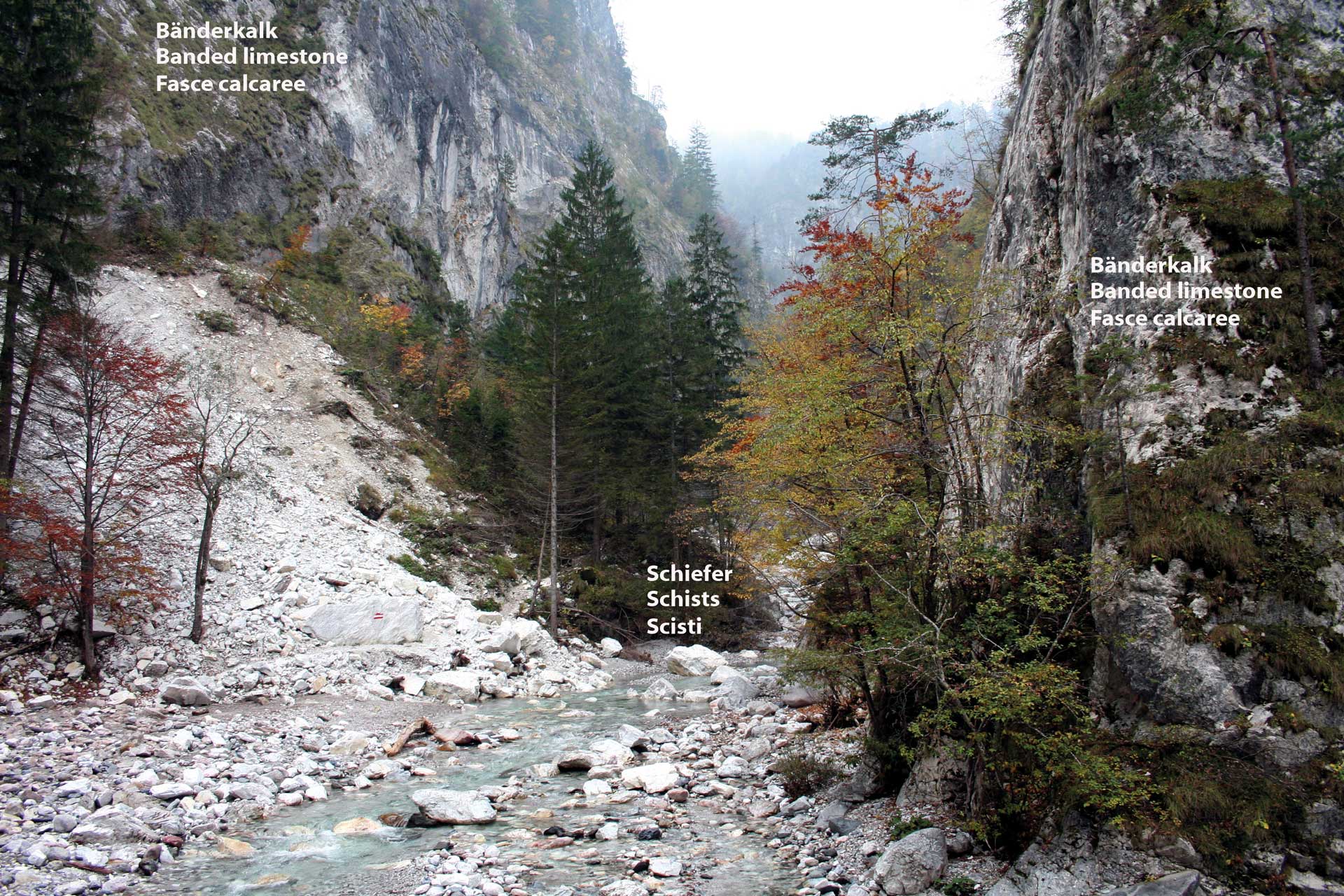From the very first glance at the Garnitzenklamm gorge, the typical features of a gorge are evident on both sides of the Garnitzen brook: the almost vertical cliff walls.
The cliff walls are made up of light grey banded limestone, which is the dominant rock type along the Geotrail. The second main rock can be seen above the brook: dark grey schists.
The formation of the gorge undoubtedly dates back to the last Ice Age, the Würm glacial Period. Of course, there were river systems here before this but any ideas as to their course are purely speculative. Following the melting of the last glacier approximately 19,000 years ago, unimaginable quantities of rubble and debris began to accumulate, having been produced by frosts of the Ice Age. This rubble was transported into the Gailtal valley by the Garnitzen brook, giving the water substantial carving powers on the rocks (erosive power). This erosive power of the water continues today, although in a weaker form, and as a result the gorge is slowly becoming deeper over time.

